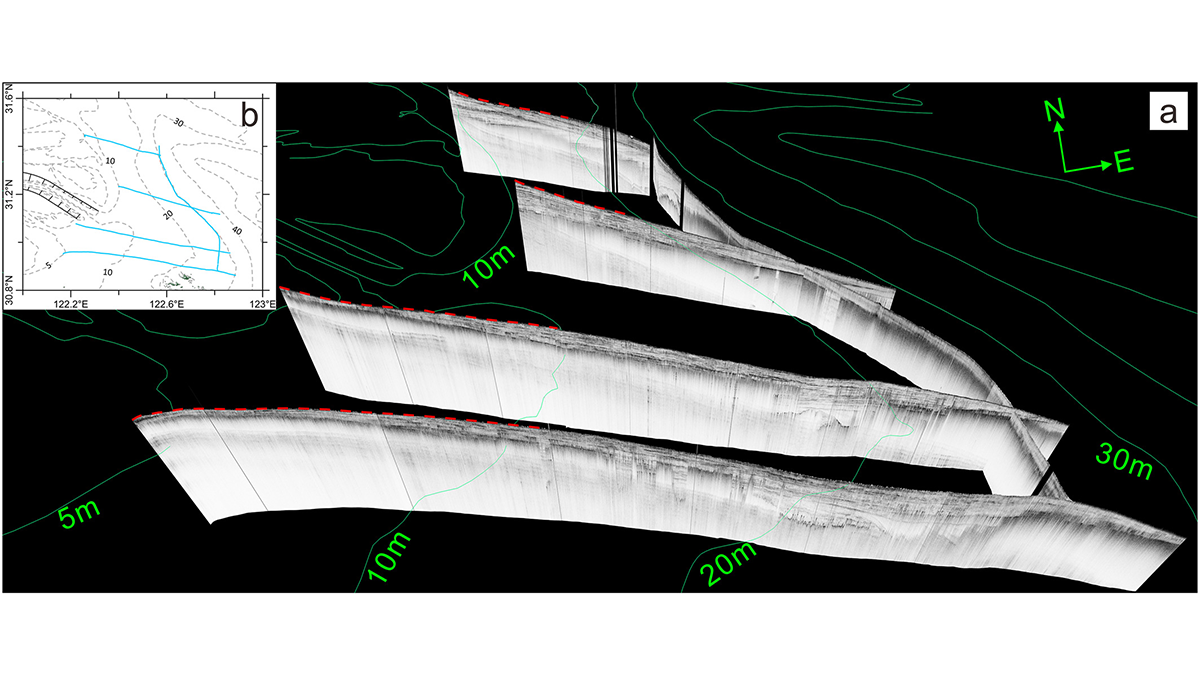Editors’ Highlights are summaries of recent papers by AGU’s journal editors.
Source: Journal of Geophysical Research: Earth Surface
River deltas are important carbon sinks and have the potential to exert a substantial influence on carbon dioxide concentrations in the oceans and atmosphere. Chen et al. [2023] demonstrate how the reduction of sediment supply to river deltas, which results from the worldwide construction of reservoir dams, can trigger increased greenhouse gas emissions.
The authors conducted seismic surveys in the Yangtze Delta in China to reveal the presence and distribution of shallow gas fields composed of biogenic methane, which appear as blank areas in the subaqueous seismic profiles (see figure above). In those seismic profiles, gas chimneys defined as narrow gas columns above the gas front are characterized by bright reflection at the top and are frequently observed in the nearshore area. This nearshore area corresponds to a prominent erosional belt seen in seabed elevation maps, which has developed as a consequence of reduced sediment supply. An estimated total amount of 0.55 to 4.35 × 1011 mol of methane is stored in a total gas area of about 3,800 km2, which is prone to be released into the ocean. In evaluating the impacts of global delta degradation, increased greenhouse gas emissions from deltaic deposits are of great concern and deserve more attention.
Citation: Chen, Y., Deng, B., Zhang, G., Zhang, W., & Gao, S. (2023). Response of shallow gas-charged Holocene deposits in the Yangtze Delta to meter-scale erosion induced by diminished sediment supply: Increasing greenhouse gas emissions. Journal of Geophysical Research: Earth Surface, 128, e2022JF006631. https://doi.org/10.1029/2022JF006631
—Ton Hoitink, Editor, JGR: Earth Surface

